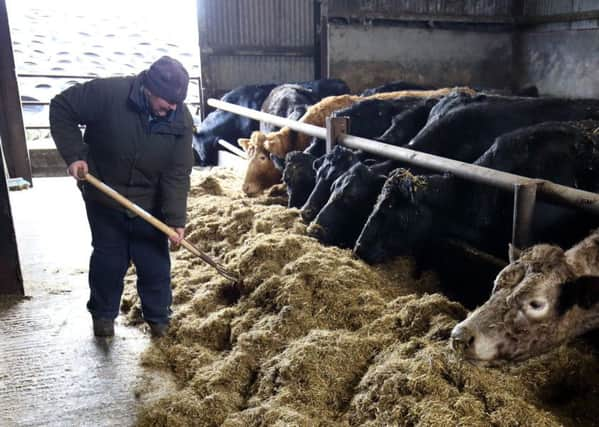What to think about when housing store beef this winter


Weanlings that have been over fed with concentrates and are “warm” will lose much of the winter weight gain in the first few weeks at pasture. Stock gaining less than 0.25 kg/day will not be able to compensate sufficiently at pasture so extreme restriction is not recommended during housing.
The response to concentrate supplementation for stores is lower than for weanling and subsequent compensatory growth at pasture is generally greater and can exceed 1kg live-weight/day. Target daily live weight gain during the housing period is 0.5 kg/day for heifers and 0.7 kg/day for steers. The optimum level of concentrate supplementation for store cattle in winter depends on silage quality. For store cattle feed a high energy 14% CP ration with minerals and vitamins included. If using forages such as maize silage or fodder beet, a protein balancer and minerals will be required. Any ration being fed to weanlings and store cattle should be palatable, fresh smelling and free of dust.
Purchasing Weanlings/Stores:
Advertisement
Advertisement
- Buy from a known source where you can ask about relevant management, dosing and vaccines given. This means you can reduce stress of mixing animals and spreading disease.
- When purchasing in the livestock market you should watch out for signs of pneumonia.
- Avoid stressful handling and ensure transport distances are as short as possible. Ideally newly purchased stock should be housed for 48 hours in a well ventilated and bedded house. If turning out keep a close eye on the weather conditions and try to aim for a dry cool day and ensure to check them twice daily for 10-14 days to they settle.
- If administering vaccines ideally leave to they have settled after 24 hours. There is a big risk of disease and live vaccines are recommended for this. Have your vaccination policy ready before purchasing and discuss with your vet.
Advertisement
Advertisement
- If worming and fluke history is unknown ideally then you should consider but not recommended when vaccinating so this work load needs to be built in. Ideally, this should be done 48 hours after vaccinating. Lice infestation can reduce cattle performance by 3-0%.
- Bacteria and viruses will develop rapidly if cattle are stressed heavily at the time of purchase.
- Purchased cattle or when cattle are housed for the first time in their life there should be 24-hour access to fresh water. Drinkers need to be checked twice per day as sometimes they will manure in them when first housed.
After new animals are housed feeding a small amount of concentrate feeding can reduce the nutritional strain and can help prevent sudden out breaks of pneumonia. Adequate feeding space at feed barriers should be available for all stock being fed concentrates.
Advertisement
Advertisement
There will be an opportunity to learn a lot more about these issues at this year’s Beef Conference which will take place on Wednesday, 21 November at CAFRE’S Greenmount Campus, Antrim from 9.30am to 4.15pm. ‘Healthy Cattle, Healthy Profits’ is the theme and there will be a range of speakers from farmers to the veterinary professions, discussing animal health, beef housing and ventilation, monitoring weanling performance after sale, contract beef finishing and much more.
The conference is open to all with an interest in beef production. The fee is £20 and includes refreshments and lunch. Bookings are encouraged online at www.ufuni.org or if you need assistance please contact Angela in the UFU head office on 028 9037 0222.